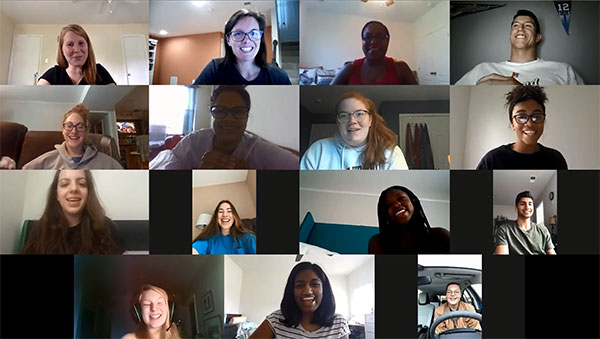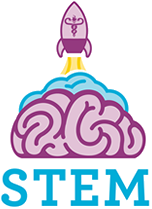Successful GEMS
A Successful GEMS, in a Virtual Environment!
August 21, 2020
About 700 students were introduced to a variety of science, technology, engineering, and math (STEM) subjects over the summer during the virtual Gains in the Education of Mathematics and Science (GEMS) program held this summer as part of the U.S. Army Medical Research and Development Command's (USAMRDC) enduring commitment to STEM education.

GEMS is open to the public and aims to reach students who are historically underserved or underrepresented in STEM areas. The program provides a platform for students to get involved in hands-on science activities that are also applicable to real-life STEM careers. This year, the USAMRDC and Hood College collaborated to offer multiple week-long virtual sessions of GEMS to students in and around the Fort Detrick community.
GEMS is an Army-sponsored STEM enrichment program for fourth through 12th grade students. The program typically takes place in participating Army research laboratories and engineering centers across the country. However, this year, the Command was faced with a difficult decision as to whether to convert the effort to a virtual program or to cancel the program all together. With student health a top priority and a desire to develop a course curriculum that was as engaging and encompassing as previous years, Ms. Lauren Beeson, the program coordinator, set out on a daunting task.
"It was difficult to imagine at first how we would incorporate hands-on experiments while taking into account that the kids would probably be performing experiments on their own with limited supervision," said Beeson.
However, the size of the task didn't prevent the virtual program from getting off the ground. Surrounded by volunteers from the USAMRDC's U.S. Army Medical Research Institute of Infectious Diseases (USAMRIID), college students interning as Near Peer Mentors, as well as local teachers serving as Resource Teachers, the prototypical in-person GEMS program was converted to a virtual environment offering students the opportunity to participate in two classes; computer coding and solving a fictitious murder mystery.
"Packing the thousands of blood bottles, fingerprinting supplies, and DNA models was a huge task, but it was completely worth it to see the students excited about the labs and the positive feedback we received from parents" said Cicely Smith, one of the three Resource Teachers participating in the program.
Despite being virtual, GEMS maintained its personal touches. Students attended virtual Google Meets multiple times a day to ask questions and get to know the Near Peer Mentors directing them through the labs. Near Peer Mentors recorded and uploaded lab "how-to-videos" and presentations to help walk students through the labs and coding challenges at their own pace. Furthermore, each day students were greeted with Career Videos that highlighted various STEM careers available to them.
"Our kids were engaged, and excited, about all the labs," commented the parent of one attending student. "It was very fun and very informational. Our daughter is inspired to learn more about how to pursue a profession doing the kind of work that she learned to do this week."
The work that students accomplished in the Crime Scene Investigators (CSI) class helped them solve the simulated murder of June Bug Wilson. Additionally, by completing a virtual escape room, CSI students learned about and then completed labs on blood typing, fingerprinting, blood splatter analysis, DNA analysis, identification of mystery powders, and hair and fiber analysis. Students in the Learn Play Code class, received daily challenges to complete in the virtual environment. Students coded collages, photo booths, cave surfer games, mazes, and even a food catcher game from scratch.
Students were not the only ones who experienced a change in how GEMS was conducted. Many of the Near Peer mentors accepted their internship assuming their teaching efforts would take place in-person. However that changed with COVID-19. John Horine, a returning Near Peer for Learn Play Code, commented that "Despite the challenges associated with online learning, GEMS students came prepared and eager to learn each and every day and produced some truly outstanding projects. Even though students weren't able to have in-person interactions, they often took it upon themselves to help their peers and effectively communicate their questions to us in the virtual setting."
But perhaps it was Sarah Martin, a CSI Near Peer Mentor that summed up the experience with virtual GEMS best.
"This is going to sound weird," she said, "but you've never experienced pure joy until you're in a Meet call with 20 students begging for clues on a simulated murder case. These interns brought enthusiasm and hard work into everything they did with us; in a largely apathetic world, their passion was so uplifting to see."
As the Army's medical materiel developer, the USAMRDC is staffed with a number of highly qualified scientists and engineers. The critical expertise in these areas ensures the Army has the medical capabilities needed to fight and win on the battlefield. The USAMRDC is committed to fostering interest in STEM fields to facilitate the development of the Nation's future scientists as an investment in the students' future, but also the Command's future.
GEMS is offered through the Army Educational Outreach Program (AEOP). Through AEOP, the Army continues its long tradition and strong commitment to the advancement of STEM education and literacy, while leveraging its most valuable assets – world-class scientists and engineers and research facilities. AEOP offers our nation's youth and teachers a collaborative, cohesive portfolio of opportunities that effectively engage future workforce generations in meaningful, real-world STEM experiences, competitions and paid internships.
For more information, about GEMS or other internships being offered visit the AEOP website at www.usaeop.com.








